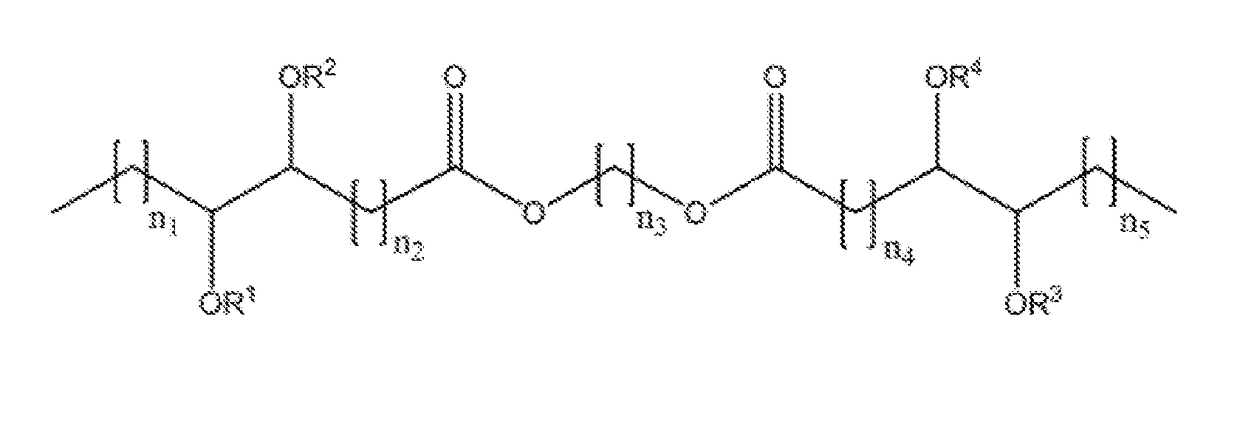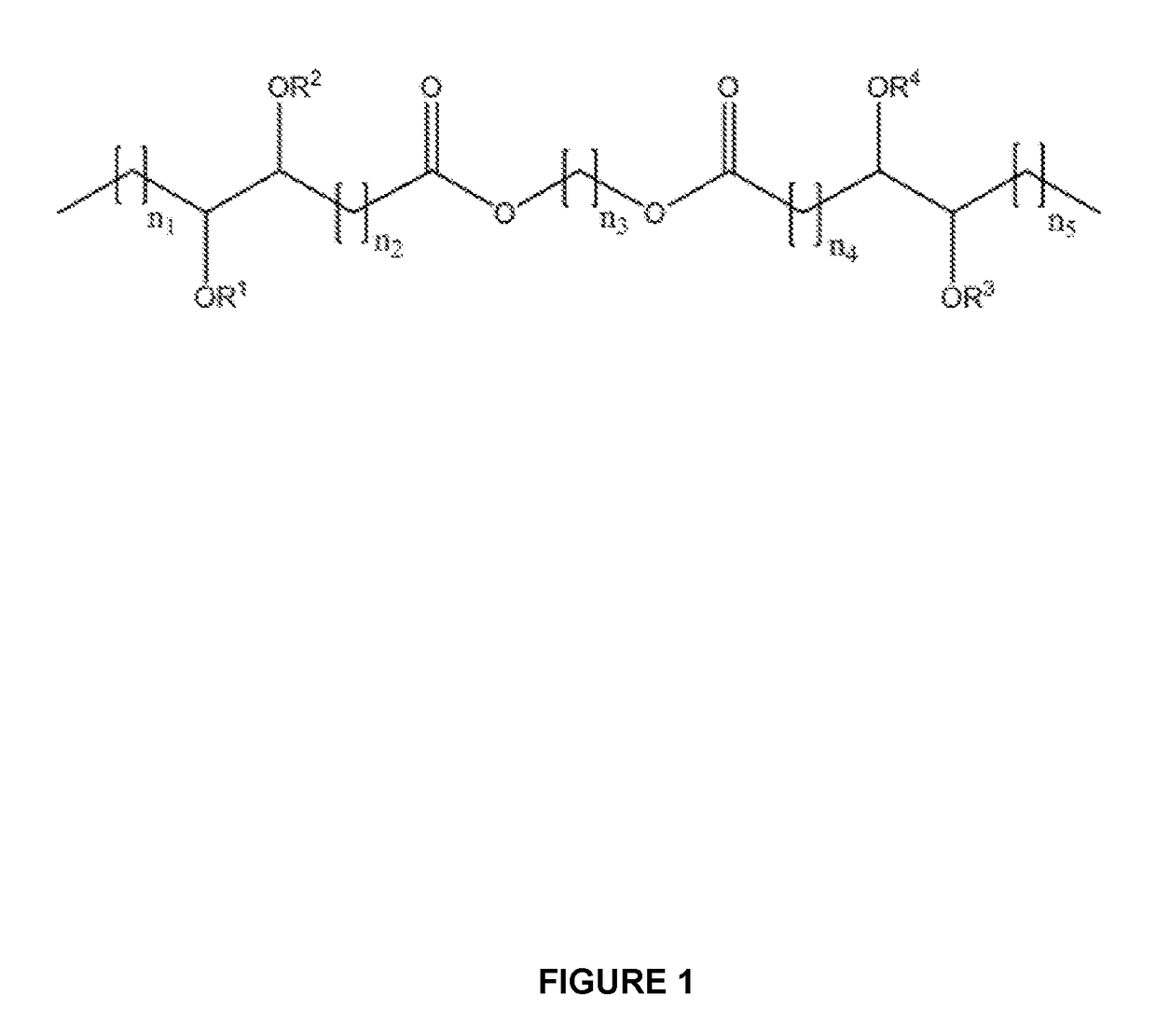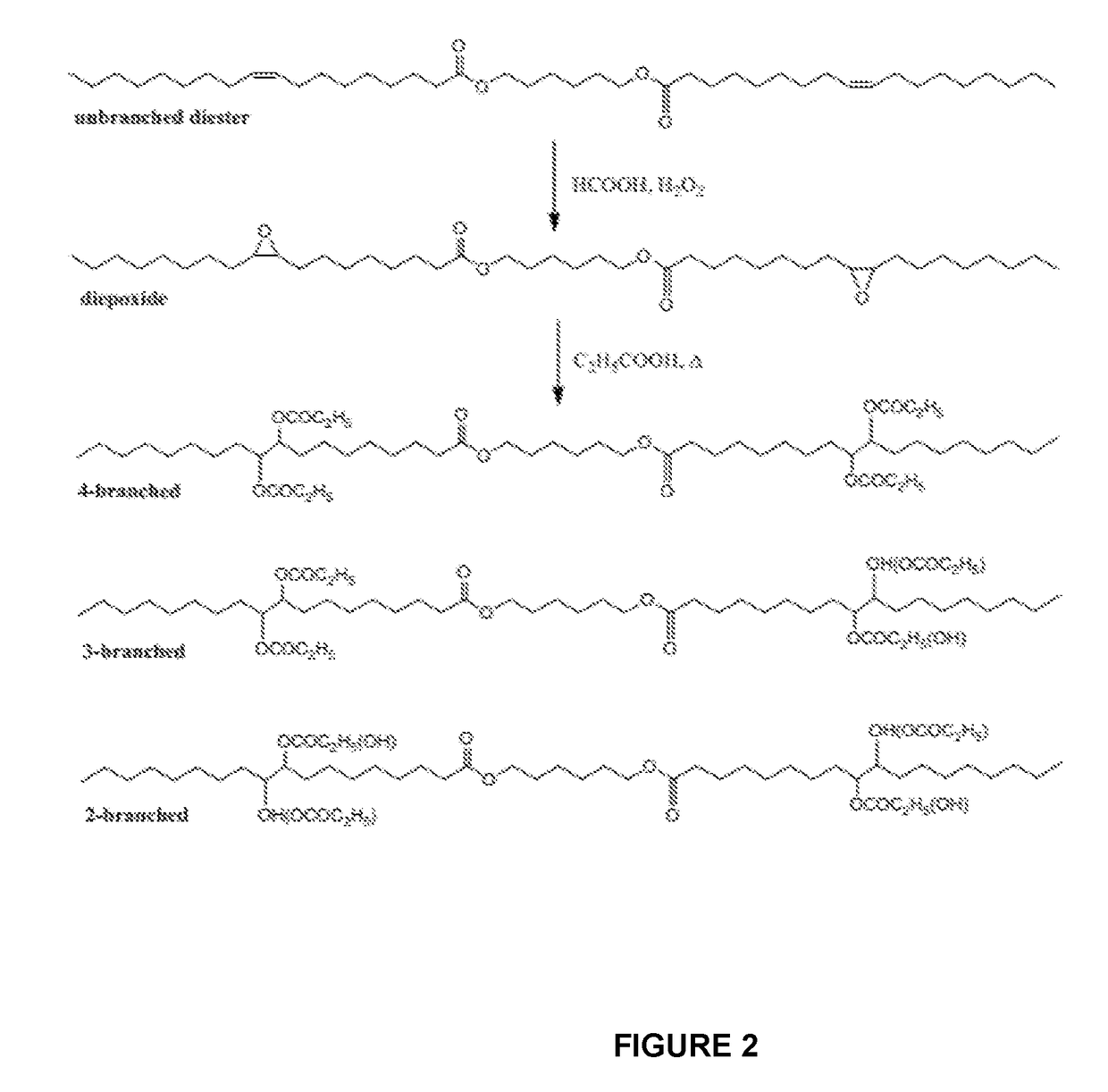Branched diesters and methods of making and using the same
a technology of diesters and diester compounds, applied in the field ofbranched diester compounds, can solve the problems of lubricant formulations, parts become damaged, and the base stock cannot be composed only of hydrocarbons, and achieve the effects of high viscosity, exceptional low-temperature performance, and large viscosity rang
- Summary
- Abstract
- Description
- Claims
- Application Information
AI Technical Summary
Benefits of technology
Problems solved by technology
Method used
Image
Examples
examples
[0074]The following examples are provided to illustrate one or more preferred embodiments of the invention. Numerous variations can be made to the following examples that lie within the scope of the claimed inventions.
Materials and Methods
Materials
[0075]Formic acid (88 wt %), hydrogen peroxide solution (30 wt %), propanoic acid (≧98%) and anhydrous sodium sulphate (99.4%) were purchased from Sigma-Aldrich Co. (USA). Acetone, dichloromethane (DCM), ethyl acetate, and hexanes were purchased from ACP Chemical Int, (Montreal, Quebec, Canada). Silica gel (230-400 mesh) was obtained from Rose Scientific Ltd (AB, Canada). TLC plates (250 μm) were obtained from Silicycle Chemistry Division (QC, Canada). All materials were used as purchased unless otherwise specified.
[0076]The base diester, 6-(oleoyloxy)hexyloleate (18-6-18), used in the preparation of the branched derivatives was prepared in our laboratory in high yield from an oleic acid derivative and 1,6-hexanediol. The preparation and p...
PUM
| Property | Measurement | Unit |
|---|---|---|
| viscosity | aaaaa | aaaaa |
| viscosity | aaaaa | aaaaa |
| Tg | aaaaa | aaaaa |
Abstract
Description
Claims
Application Information
 Login to View More
Login to View More - R&D
- Intellectual Property
- Life Sciences
- Materials
- Tech Scout
- Unparalleled Data Quality
- Higher Quality Content
- 60% Fewer Hallucinations
Browse by: Latest US Patents, China's latest patents, Technical Efficacy Thesaurus, Application Domain, Technology Topic, Popular Technical Reports.
© 2025 PatSnap. All rights reserved.Legal|Privacy policy|Modern Slavery Act Transparency Statement|Sitemap|About US| Contact US: help@patsnap.com



